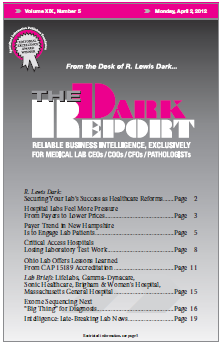CEO SUMMARY: It’s a new trend and gathering momentum. At managed care contract renewal time, more hospitals and health systems report much stronger pressure from health insurers to accept deep cuts to laboratory test prices. At the same time, managed care companies are getting smarter at designing health benefits plans that motivate and/or incentivize patients …
Hospital Labs Feel More Pressure to Lower Prices Read More »
To access this post, you must purchase The Dark Report.


